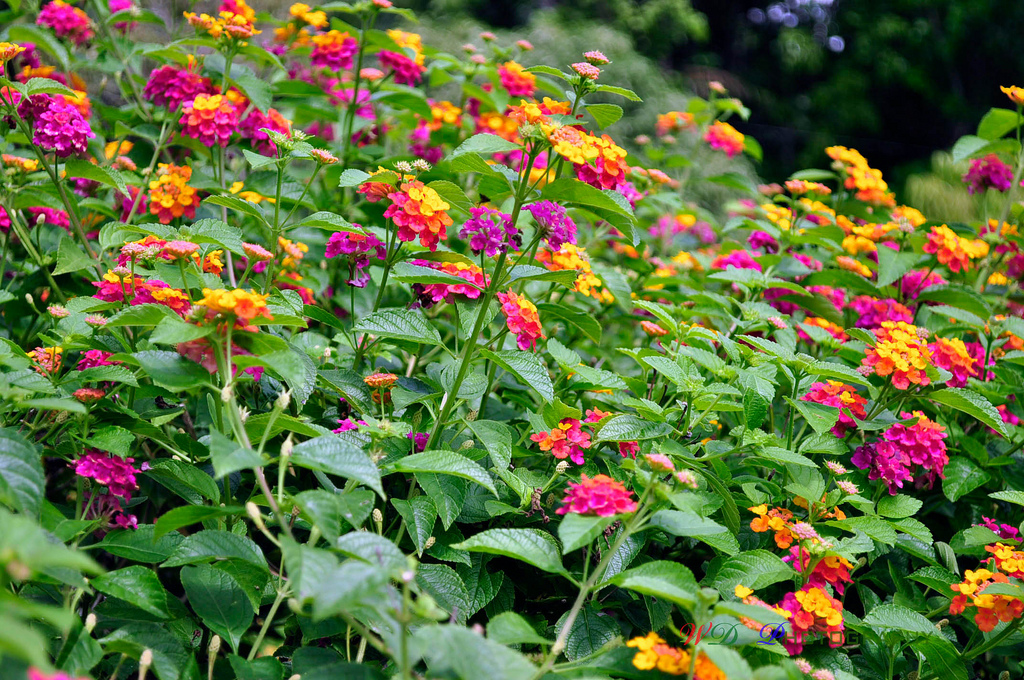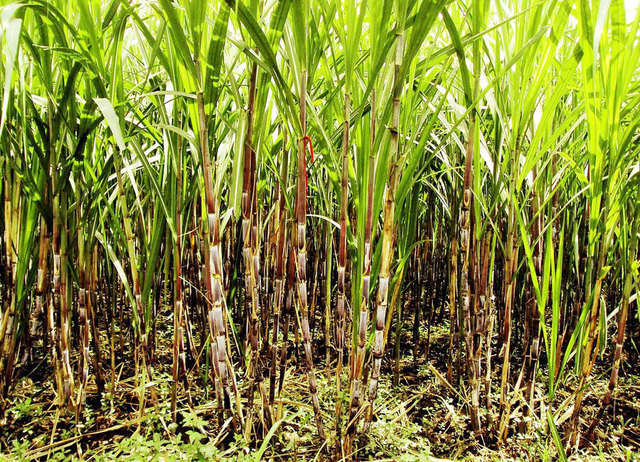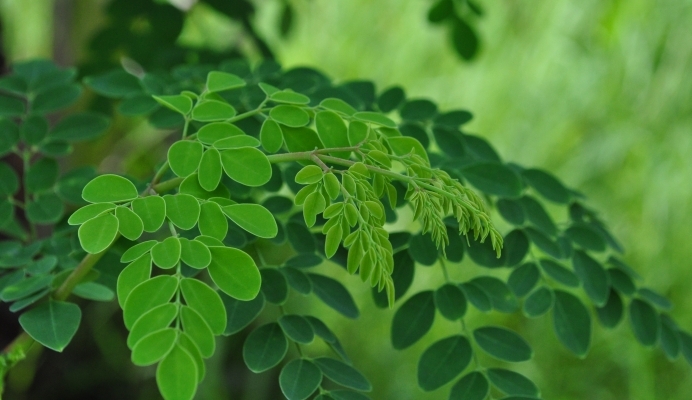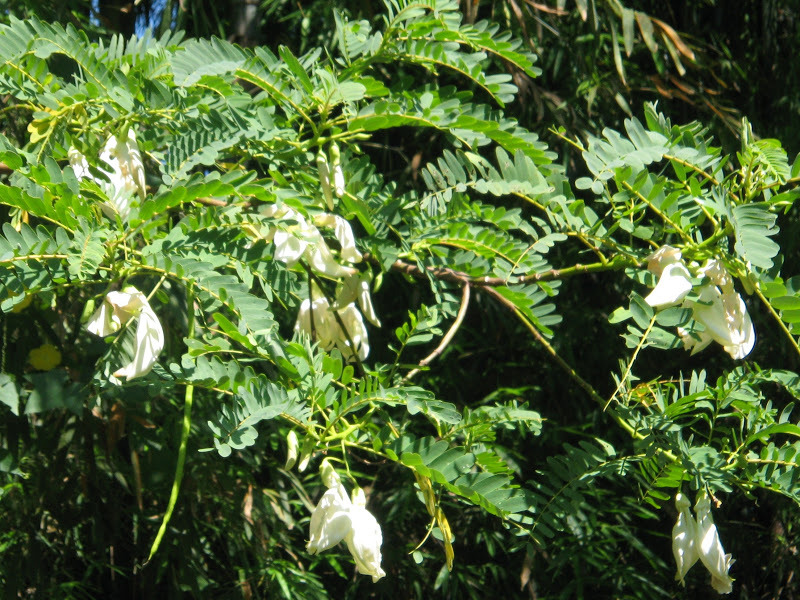
The kantutay or lantana is a low plant commonly on vacant lots and lawns. But sometimes, it is also seen as ornamental plants in parks, plazas, and the side of the road. It has hairy leaves and colorful flowers with a strong smell. In other areas, it is considered weeds.
what is the nutrition and chemical available lantana camara?
the different parts of the plant kantutay can capture a wide variety of chemicals and substances that may have health benefits:
the leaves contain volatile oil lantanol. It also has a bicyclic terpene, d-and l-phellandrene
the bark is then taken of lantanine
the root has a high level of oleanolic acid
What part of the plants used as drugs, and how to use them?
can be used as medicine some parts of the plant such as:
Root. The root of kantutay usually boiled in water for treatment. Sometimes, it is dried before boil.
Leaves. Often boiled in water for treatment, just greasing oil and heat on the fire before applying, you can also grind the leaves and immediately apply on the skin condition.
bark. Also used the bark of the branches of kantutay by boiling on water that may include more of the boiled leaves.
flowers. Usually dried before adding flowers to drink and use as medicine.
what diseases and conditions that may treated lantana camara?
1. Toothache. The decoction of fresh root can be enormously kantutay scraps of persons suffering from toothache.
2. Wound. Also helps decoction of leaves kantutay quick recovery of the wounds, It can be use to wash only the affected part of the body.
3. Snake bites. Boiled leaves of kantutay can be drink by people bitten by snakes. The pulp of the leaves is boiled and apply on area bitten by snake.
4. Flu. You can use the root of kantutay or dried the root then boil and then drink by patient with flu.
5. Fever. Effective in lowering fever drinking the decoction of the bark of kantutay. You also decoction of leaves and flowers and drinking it as tea.
6. Tuberculosis. The dried flowers of kantutay may boil and drink to people with tb as tea.
7. Dermatits. Ipinangpapahid affected skin in the crushed leaves and branches kantutay.
8. Rheumatism. The pain in the joints can be refreshed by leaves of kantutay, and heat it with the fire. It also helps to take the decoction of the leaves.
9. Malaria. Also helps by taking decoction of the leaves and roots of kantutay to treat conditions of malaria.

The kantutay or lantana is a low plant commonly on vacant lots and lawns. But sometimes, it is also seen as ornamental plants in parks, plazas, and the side of the road. It has hairy leaves and colorful flowers with a strong smell. In other areas, it is considered weeds.
what is the nutrition and chemical available lantana camara?
the different parts of the plant kantutay can capture a wide variety of chemicals and substances that may have health benefits:
the leaves contain volatile oil lantanol. It also has a bicyclic terpene, d-and l-phellandrene
the bark is then taken of lantanine
the root has a high level of oleanolic acid
What part of the plants used as drugs, and how to use them?
can be used as medicine some parts of the plant such as:
Root. The root of kantutay usually boiled in water for treatment. Sometimes, it is dried before boil.
Leaves. Often boiled in water for treatment, just greasing oil and heat on the fire before applying, you can also grind the leaves and immediately apply on the skin condition.
bark. Also used the bark of the branches of kantutay by boiling on water that may include more of the boiled leaves.
flowers. Usually dried before adding flowers to drink and use as medicine.
what diseases and conditions that may treated lantana camara?
1. Toothache. The decoction of fresh root can be enormously kantutay scraps of persons suffering from toothache.
2. Wound. Also helps decoction of leaves kantutay quick recovery of the wounds, It can be use to wash only the affected part of the body.
3. Snake bites. Boiled leaves of kantutay can be drink by people bitten by snakes. The pulp of the leaves is boiled and apply on area bitten by snake.
4. Flu. You can use the root of kantutay or dried the root then boil and then drink by patient with flu.
5. Fever. Effective in lowering fever drinking the decoction of the bark of kantutay. You also decoction of leaves and flowers and drinking it as tea.
6. Tuberculosis. The dried flowers of kantutay may boil and drink to people with tb as tea.
7. Dermatits. Ipinangpapahid affected skin in the crushed leaves and branches kantutay.
8. Rheumatism. The pain in the joints can be refreshed by leaves of kantutay, and heat it with the fire. It also helps to take the decoction of the leaves.
9. Malaria. Also helps by taking decoction of the leaves and roots of kantutay to treat conditions of malaria.
 The miracle leaf is a plant of medium height and only known for its roots to the leaves. The leaves of native roots can be grown and profit of the new plant. It has thick, succulent leaves and there is also a lot of flowers bowed. It usually grows in many place in archipelago of the Philippines and other Asian countries in tropical regions.
what is the nutrition and chemical available miracle leaf?
the different parts of the plant can wonderfully capture a wide variety of chemicals and substances that may have health benefits:
the chemicals that can get plants are alkaloids, triterpenes, glycosides, flavonoids, steroids, butadienolides, lipids, and organic acids. There arachidic acid, astragalin, behenic acid, beta amyrin, benzenoids, bersaldegenin, beta-sitosterol, bryophollenone, bryophollone, bryophyllin, caffeic acid, ferulic acid, quercetin, steroids, and taraxerol.
the leaves contain bryophyllum a, b and c, and malic acid.
What part of the plants used as drugs, and how to use them?
can be used as medicine some parts of the plant such as:
the whole plant can be used the extract treatment.
Leaves. extraction or beat the thick foliage miracle leaf apply to the affected area in the body. It can also heat it on fire before applying on the skin.
what diseases and conditions that may be treated by miracle leaf?
1. Insect bites. crushed leaves and apply on the affected area. This will help to lose itching and irritation to the skin.
2. Eczema. The condition of eczema or inflammation of the skin can be treated by crushed leaves of miracle leaf.
3. Wounds. To accelerate wound healing fire. It can also grind before down to help heal wounds.
4. Boil. The plaster is also boil leaves slightly flattened. You can also use the treated leaves in fire.
5. Diarrhea and dysentery. The continuous pollution might help ease the drinking the juice wonderfully available on leaves and branches.
6. Asthma. The leaves are first soaked in hot water for 15 minutes to extract and drink for asthma condition.
7. High blood pressure. Effectively lowers blood pressure drinking the juice plant marvel.
8. Ear aches. Also drops in a sore ear leaf extract strange to feel better.
9. Headaches. apply the leaves on the forehead and temples to reduce the headaches.
10. Rheumatism. apply the crushed leaves on the aching joints caused by arthritis.
The miracle leaf is a plant of medium height and only known for its roots to the leaves. The leaves of native roots can be grown and profit of the new plant. It has thick, succulent leaves and there is also a lot of flowers bowed. It usually grows in many place in archipelago of the Philippines and other Asian countries in tropical regions.
what is the nutrition and chemical available miracle leaf?
the different parts of the plant can wonderfully capture a wide variety of chemicals and substances that may have health benefits:
the chemicals that can get plants are alkaloids, triterpenes, glycosides, flavonoids, steroids, butadienolides, lipids, and organic acids. There arachidic acid, astragalin, behenic acid, beta amyrin, benzenoids, bersaldegenin, beta-sitosterol, bryophollenone, bryophollone, bryophyllin, caffeic acid, ferulic acid, quercetin, steroids, and taraxerol.
the leaves contain bryophyllum a, b and c, and malic acid.
What part of the plants used as drugs, and how to use them?
can be used as medicine some parts of the plant such as:
the whole plant can be used the extract treatment.
Leaves. extraction or beat the thick foliage miracle leaf apply to the affected area in the body. It can also heat it on fire before applying on the skin.
what diseases and conditions that may be treated by miracle leaf?
1. Insect bites. crushed leaves and apply on the affected area. This will help to lose itching and irritation to the skin.
2. Eczema. The condition of eczema or inflammation of the skin can be treated by crushed leaves of miracle leaf.
3. Wounds. To accelerate wound healing fire. It can also grind before down to help heal wounds.
4. Boil. The plaster is also boil leaves slightly flattened. You can also use the treated leaves in fire.
5. Diarrhea and dysentery. The continuous pollution might help ease the drinking the juice wonderfully available on leaves and branches.
6. Asthma. The leaves are first soaked in hot water for 15 minutes to extract and drink for asthma condition.
7. High blood pressure. Effectively lowers blood pressure drinking the juice plant marvel.
8. Ear aches. Also drops in a sore ear leaf extract strange to feel better.
9. Headaches. apply the leaves on the forehead and temples to reduce the headaches.
10. Rheumatism. apply the crushed leaves on the aching joints caused by arthritis.

The sugar cane is a well-known and widespread crop because it is processed and used sources of sugar and molasses. It is high grass with a body that seemed to beckon. The leaves are long and sharp weapons. This widespread crops in many parts of the world, including the Philippines.
what is the nutrition and chemical available for profit?
the different parts of the pipe can capture some kind of chemicals and nutrients that may have health benefits:
sucrose is the main substance available cane. This is to be processed sugar.
what part of the plants used as drugs, and how to use them?
some parts of the plant can be used in practice:
root. The roots of the tube can be boiled to drink and to grow.
puree. Sweet juice from sugar cane can also be used in some treatments.
what the disease of profits be treated?
1. Fever. Claims effective for fever drinking sweet juice plated.
2. Dry cough. The noisy cough or dry cough may also treat the drinking sugarcane juice.
3. Difficulties in bowel movements. Help with diarrhea drinking sweet molasses from sugar cane products.
4. Wounds. apply in a open wound of the pulp extract. This will help to accelerate the healing of wounds.
5. High blood pressure. Elsewhere, the decoction of the leaves of the sugar cane will help somewhat in lowering high blood pressure.
 The horseradish or malunggay is a plant known for its leaves that can be eaten as a vegetable. It is common in low-lying areas in the Philippines, a small tree with leaves and circles. The fruit is oblong like legumes and the flowers are white and fragrant smell. The plant proved rich in essential vitamins and minerals.
what is the nutrition and chemical available malunggay?
the different parts of the plant horseradish can capture a wide variety of chemicals and substances that may have health benefits:
the seeds have ben oil or behen oil contains palmitic, stearic, myristic, oleic and behenic acids
the root also had alkaloid moringine and moringinine
the leaves are rich in calcium, iron, phosphorus and vitamins a, b and c
the fruit also contains protein and phosphorus, calcium and iron
what part of the plants used as drugs, and how to use them?
can be used as medicine some parts of the plant such as:
leaves. The horseradish leaves are boiled and consumed, or eaten by itself. It can also grind and patching certain affected area.
Fruit The bean-like fruits are also eaten for some conditions in the body.
root. The root is usually boiled to drink and also cure.
bark. Also effective decoction of the bark of horseradish
what diseases and conditions that may be treated?
The horseradish or malunggay is a plant known for its leaves that can be eaten as a vegetable. It is common in low-lying areas in the Philippines, a small tree with leaves and circles. The fruit is oblong like legumes and the flowers are white and fragrant smell. The plant proved rich in essential vitamins and minerals.
what is the nutrition and chemical available malunggay?
the different parts of the plant horseradish can capture a wide variety of chemicals and substances that may have health benefits:
the seeds have ben oil or behen oil contains palmitic, stearic, myristic, oleic and behenic acids
the root also had alkaloid moringine and moringinine
the leaves are rich in calcium, iron, phosphorus and vitamins a, b and c
the fruit also contains protein and phosphorus, calcium and iron
what part of the plants used as drugs, and how to use them?
can be used as medicine some parts of the plant such as:
leaves. The horseradish leaves are boiled and consumed, or eaten by itself. It can also grind and patching certain affected area.
Fruit The bean-like fruits are also eaten for some conditions in the body.
root. The root is usually boiled to drink and also cure.
bark. Also effective decoction of the bark of horseradish
what diseases and conditions that may be treated?
1. Hiccup. The hiccup that could help ease the drinking decoction of the leaves of horseradish.
2. Breastfeeding milk. Helps them to take the decoction of young leaves of horseradish on strengthening milk of nursing mothers.
3. Difficulties in bowel movements. The constipation or constipation can be helped by eating the fruit and leaves of horseradish
4. Wounds. The sustained severe wounds can be washed with the decoction of the root of horseradish. The crushed leaves mixed with coconut oil is also ideal to accelerate wound healing.
5. Muscle aches (spasm). drinking the decoction of the roots of horseradish those aching muscles spasm due.
6. Sore throat. Also effective for sore throat rinse decoction of the root.
7. Arthritis. The condition also can relieve arthritis with the help of drinking decoction of the seeds of horseradish, or decoction of the leaves of horseradish.
8. Hypertension.can decrease blood pressure by eating seeds of horseradish.
9. Asthma. Can also help with asthma condition of drinking milk mix with root extract of horseradish.
10. Worms in the stomach. Also used to deworm by eating the seeds of horseradish.

The katuray is a high tree blooming herbaceous legumes and fruits. It usually grows in the plains of luzon and mindanao, but probably originally came from neighboring countries in southeast asia and australia. Can vegetables and flowers as well as fruit so often it crops the grounds . .
what is the nutrition and chemical available katuray?
the different parts of the plant katuray can capture a wide variety of chemicals and substances that may have health benefits:
the bark is a miscarriage of tannin and gum.
you also sesbanimide and saponin from seeds.
the flowers contain proteins, tannins, oleanolic acid, kaempferol, cystine, isoleucine, asparagine, phenylalanine, valine, nicotinic acid, and vitamins b and c. It also has carbohydrates, saponins, flavonoids, alkaloids, and glycosides. It also is taken of minerals such as calcium and iron.
what part of the plants used as drugs, and how to use them?
can be used as medicine some parts of the plant such as:
root. Can extract the root and mix with honey (honey) to drink.
bark. You can also boil the bark to a drink with people feeling not in a condition.
Leaves. Basically crush leaves to be used to refill the conditions in the body.
flowers. The flowers can be eaten alone or kadalasà kinakatasan.
what diseases and conditions that may treated katuray?
1. Cough with phlegm wearing. Taking root juice mixed with honey to relieve the feeling and unleash the persistent phlegm.
2. Coughing up blood. Feeding of the decoction of the bark of katuray people cough up blood.
3. Smallpox. Also effective drinking the decoction of the bark of katuray also provided for smallpox.
4. Leakage of cold. Also help drinking juice leaf flowers for losing runny nose to nose.
5. Difficulties in bowel movements. You can take a decoction of the leaves katuray to better facilitate diarrhea.
6. Bronchitis. The food bean-like fruit of katuray breathing will help you feel the person with bronchitis.
7. Itching. Is used to refill the skin with itching the beaten bark of trees.
8. Sinusitis. Feeding the extract of flowers in the nose difficulty breathing caused by sinusitis.
 |
| Kinchai or Celery |
Kinchai or celery is a common vegetable that is sold in the market. It is only small plants with tender branches. In the Philippines, two types of plants grow kinchai: a thinner more visible in low-lying areas (Chinese celery), and another one with a stout stems that grow in higher areas like benguet (usually celery). It came from countries in europe and north asia.
what is the nutrition and chemical available celery?
the different parts of the plant kintsai can capture a wide variety of chemicals and substances that may have health benefits:
the plants of celery contain glucoside, apiin, mannite and inosite
the seeds are also rich in flavonoids, anthrons, xanthones and tannins.
one study also says that the plant has calories, vitamin k, molybdenum, folate, potassium, fiber, manganese, vitamin b2, pantothenic acid, copper, calcium, vitamin c, vitamin b6, magnesium, vitamin a
what part of the plants used as drugs, and how to use them?
can be used as medicine some parts of the plant such as:
the whole plant of celery can be eaten and used in treatment. It can extract, patching, boil in water and drinks like tea.
what diseases and conditions that may treated celery?
1. Difficulty in urination. Effective aid urination drinking a decoction of the leaves and stalk of celery.
2. Asthma. It may help to difficulty in breathing caused by asthma inhalation crushed seeds of celery. Puts on the cloth before the crushed seeds breathe. You can also drink decoction of seeds.
3. High blood pressure. Also can decrease the blood pressure, eating leaves and stalk of celery.
4. Rheumatism. A regular diet of celery will help to reduce the pain of the joints due to arthritis. Has the same effect was drinking the decoction of the seeds of celery.
5. Gout. A regular diet of celery also helps in reducing the impact of gout on the body.
6. Damage of cells due to free radicals. There is a strong antioxidant juice celery, and so help to take it to reduce the destruction of cells in the body, for example the wrinkles in the skin.
7. Damage to the liver. Helps in the recovery of damaged liver regularly eating vegetables kinchai
8. Cancer. Some studies also say that a good effect on people with cancer drinking celery juice.